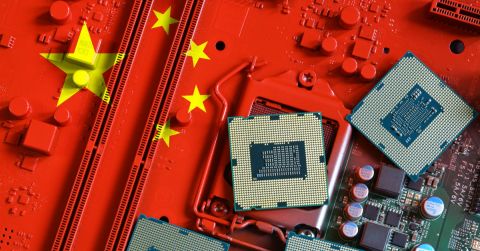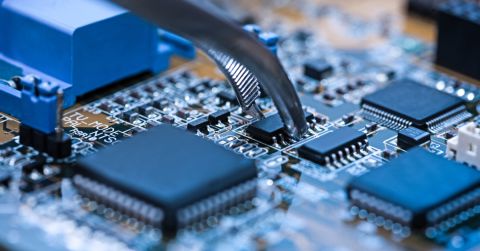Programmable Logic Controllers for Industrial Applications

When programmable logic controllers were born in the late 1960s, they revolutionized the manufacturing industry and gave machinery a sense of intelligence. Since then, the programmable logic controller market has exploded with multiple manufacturers designing platforms with increasing I/O capacity, memory, speed, scalability, and control capabilities.
 One of the first programmable logic controllers, designed in the 1960’s
One of the first programmable logic controllers, designed in the 1960’s
Obviously, all PLC manufacturers claim to have the best platform on the market, and selecting the best platform for a given project can be demanding. Often, cost is not the major factor when choosing a programmable logic controller system, and there are other concerns such as future expansion capabilities, ease of maintenance, and availability of replacement parts.
Brick Programmable Logic Controllers
There are two primary types of control platforms which are commonly used in industrial applications. The first type of programmable logic controller is called a “brick” controller. This is usually non-expandable, meaning it has a fixed number of inputs and outputs with limited memory capacity. However, brick units have been released to the market in the last few years which can support upwards of 100 I/Os. These units are also designed with expansion capabilities.
Brick controllers are limited to use in packaged machines, projects requiring a small number of field devices, or projects that require a small number of I/Os such as switches, encoders, sensing devices, or high level math functions. Generally all bricks are solid state technology, i.e., they have no moving parts with the exception of the output side of the controller.
If your brick is a relay output system, then there are mechanical relays on the output side of the controller for switching small loads. The current limits in these relays are typically less than 5 A, but in some cases they can reach 10 A, depending on the relay rating and whether the load is inductive or resistive. These controls generally have 1 or 2 analog I/O points for position feedback or level sensing as an example. Relay outputs can generally carry more output current (both DC and AC) than their transistor/triac output counterparts, but they have a shorter lifespan and generally have slower response time.
Omron ZEN-10C2DR-D-V2
The Omron ZEN-10C2DR-D-V2 has practical use in simple control applications, such as pump or motor control with a basic startup sequence using basic timing and counting functions. This controller offers these options (found on page 1 of the datasheet).
- 6 inputs
- 4 relay outputs
- Supports expansion up to 44 I/O points (V2 series)
- Can support 24 V up to 120 V input
An example application involves starting a motor and sounding an alarm in a timed sequence:
 Omron ZEN-10C2DR-D-V2 application example
Omron ZEN-10C2DR-D-V2 application example
Velocio Ace 1430 Micro PLC
The Velocio Ace 1430 Micro PLC micro-brick controller is an excellent choice for controlling step and direction in servo and stepper motor applications. This innovative controller provides 6 inputs and 12 outputs and eliminates the need for specific high speed outputs to control step and direction. The software is also easy to use and has an interface specifically designed for motion control. An example application involves using the controller with the popular Teknic Clearpath integrated servo motor, where “integrated” means there is no need for a standalone servo drive. This programmable logic controller has a small form factor, allowing it to be easily mounted on a small rack or bracket.
 Velocio Ace 1430 Micro PLC dimensions. From Velocio.net
Velocio Ace 1430 Micro PLC dimensions. From Velocio.net
Modular (Rack Based) Programmable Logic Controllers
The previous two units are examples of brick PLCs, but these should be contrasted with a modular controller, where PLC modules are mounted in rack units. Modular programmable logic controllers provide greater flexibility, easier maintenance, and far more memory than brick controllers. For advanced manufacturing systems and applications, modular systems are powerful enough to provide I/O counts exceeding 100 points and can execute complex math functions.
Selecting a system with the right options simply comes down to how many I/O points your project requires and the type of industrial communications network on which the controller will reside. If your I/O count is less than 100 points and doesn't require high level math functions or significant memory, then a brick controller such as those shown above will be more than sufficient.
It is worth noting that using more than 75 points on a brick controller will consume most of the available memory, leading to poorer performance. Once your I/O count increases beyond 100 points, it is best to consider a high level control system with a virtually unlimited I/O range that is expandable and supports multiple communication protocols. The use of tag-based programming software will help in both small and large I/O projects to conserve memory.
Allen Bradley Controllogix Platform
The Allen Bradley Controllogix Platform is a powerful high-level controller that uses tag-based programming software called Studio 5000. This software has revolutionized the way PLCs are programmed, making ladder logic seem archaic in comparison. The digital I/O modules support various voltage ranges and can accept a range of 8-32 points per rack-mounted card.
The Controllogix Platform has endless configuration possibilities with specialty I/O cards and remote I/O modules that support fiber connections for data transfer. This control system would be suitable for high level applications, such as control systems for primary plant process with PC-based operator interface or other HMI system. The system supports Ethernet protocols as well, as control net and device net.
 Allen Bradley Controllogix Platform application example. From ProSoft Solutions
Allen Bradley Controllogix Platform application example. From ProSoft Solutions
Industrial systems have seen plenty of advances, and programmable logic controllers have managed to stay the course and produce technological advances as well. If you’re looking for cutting-edge PLCs for industrial systems, you can find the components you need on Octopart!
We hope you found this article useful! If you'd like to have content like this delivered to your inbox, sign up for our monthly newsletter!








